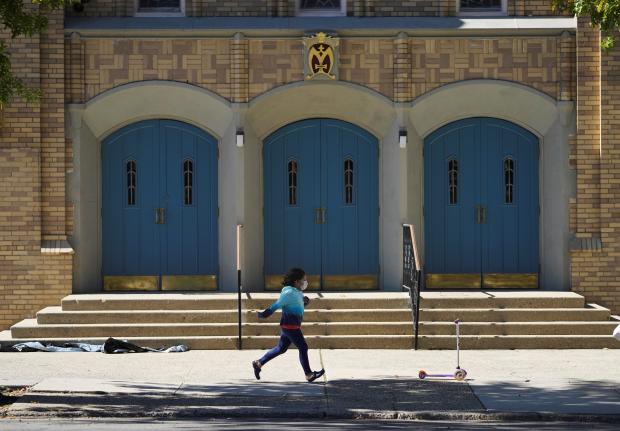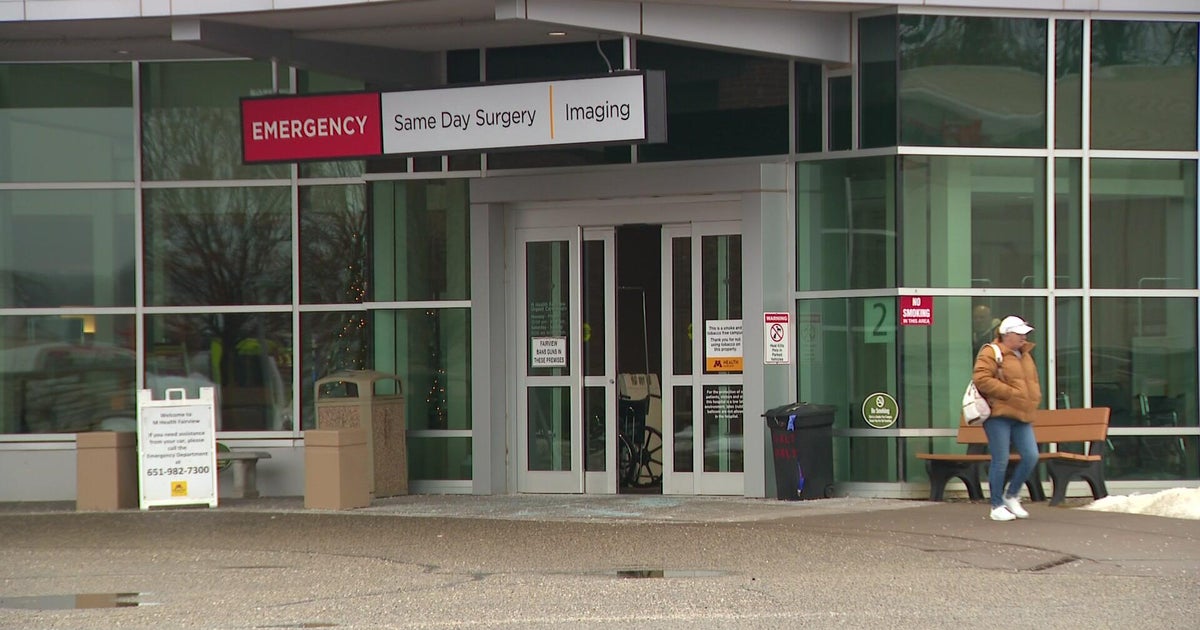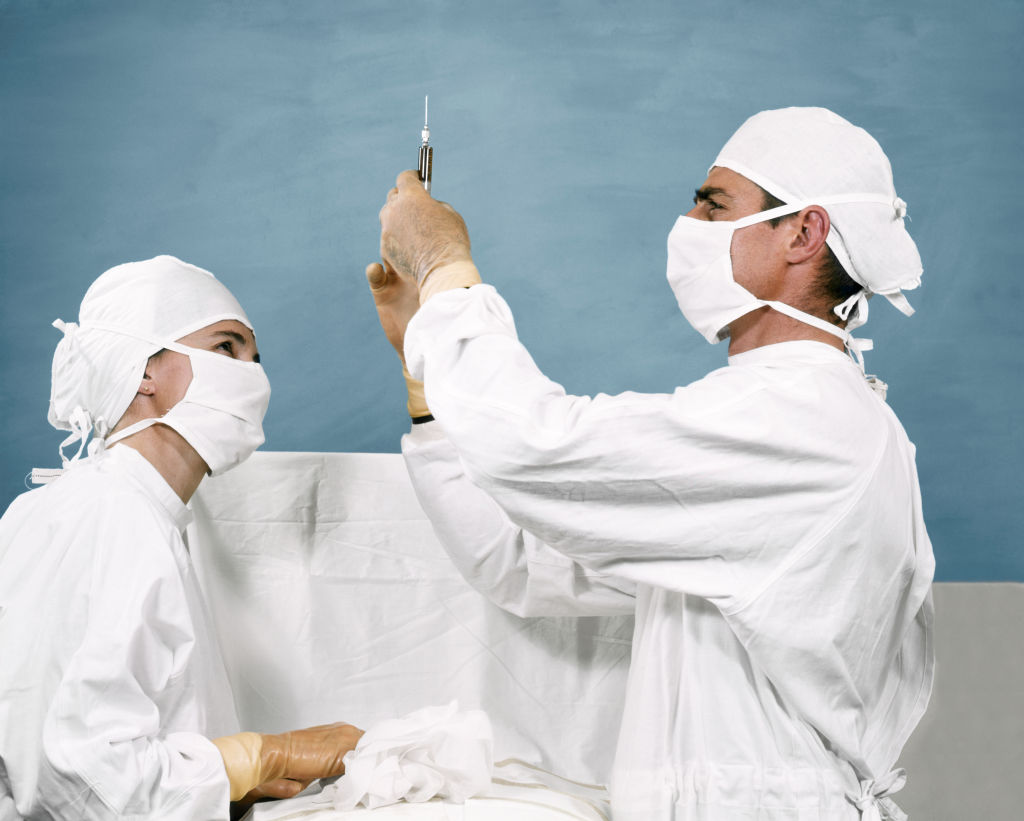U.S. reports weekly record for COVID-19 cases in children
The American Academy of Pediatrics announced late Monday that the number of children contracting COVID-19 has soared to unprecedented levels, with nearly 200,000 new cases in the month of October. In just one week late last month, 61,000 new cases were reported in kids – more than any other week during the pandemic.
In terms of overall cases, 18 states have broken daily records for new infections in the past week, and hospitalizations are up in 43 states. Since the start of the pandemic, over 9.2 million cases have been confirmed in the U.S. and more than 231,000 Americans have died due to the virus, according to a tally from Johns Hopkins University.
The pandemic has led to an election season unlike any other before it in the United States. In the lead up to Election Day, record numbers of Americans have cast their ballots early, as the nation continues to battle the new surge in cases.
The CDC says voters who are sick or quarantined can still go to the polls on Election Day, as long as they take proper precautions like wearing a mask.
Contributing: Adriana Diaz and The Associated Press
Shut down again: Is it last call for restaurants and bars?
Kevin Boehm has had it. The veteran restaurateur, who has opened more than 30 restaurants over his career and now leads more than a dozen acclaimed Chicago establishments, is facing a new round of restrictions on eateries in the state as Illinois battles an alarming surge in COVID-19.
"Just four to six weeks ago we reopened our diner again. We changed the menu and now they're shutting us down again," he said, expressing frustration with Illinois Governor J.B. Pritzker's renewed - and indefinite - ban on indoor dining and bar service, which took effect October 30.
Boehm said it's "maddening" to have to shut down his restaurants a second time, noting the costs and effort of opening and closing on short notice.
"Restaurants aren't like a hardware store. You don't just turn on the lights and have inventory," said Boehm, co-founder of the Boka Restaurant Group.
The restaurant shutdowns this spring were seen by most experts as a necessary, if financially painful, way to help flatten the COVID-19 curve. But the latest jump in cases, which comes as temperatures in much of the country drop and make outdoor dining less palatable, could mean a last call for many restaurants.
Patients from other states head to Colorado
As hospitals in neighboring states reach capacity, COVID-19 patients from Texas to New Mexico and several other states are being sent to Colorado hospitals for treatment, according to CBS Denver.
"They (hospitals) may reach ICU capacity. They may have issues with the number of ventilators available, maybe they have staffing capacity issues," said Cara Welch with the Colorado Hospital Association.
In recent weeks, UCHealth reports taking in eight COVID-19 patients from Kansas, New Mexico, Wyoming and Montana.
Dan Weaver, UCHealth's vice president of communications, said, "Our priority is always on caring for our patients and for people throughout the State of Colorado. If our overall capacity was at a level where we were worried we might not be able to care for patients from Colorado, then we wouldn't accept out-of-state transfer requests. Those requests are only evaluated when our hospitals have the capacity and capability to accept transfers." Weaver continued, "Importantly, all of our hospitals have the ability to care for additional patients at this time, so we encourage people to not delay their medical care. This past spring, we saw people avoiding medical care for urgent and even emergency medical conditions, which can be dangerous and can lead to more serious medical problems."
HealthONE said it has taken three or four COVID-19 patients from Texas, South Dakota and Montana in the past several days. Stephanie Sullivan with HealthONE said the transfers were "due to capacity issues in those other states."
Kevin Massey of Centura Health, said Centura Health hospitals in Colorado have recently taken in fewer than five COVID-19 patients from Texas and New Mexico.
"Federal regulations require that we accept patients for emergency transfer if we have adequate capacity," said Massey.
Indiana reports 2,951 new cases and 50 deaths
Indiana public health officials Tuesday announced 2,951 new confirmed cases of COVID-19 and an additional 50 confirmed deaths. This brings the total number of cases in the state to 188,066 and the total number of confirmed deaths to 4,199, according to the Indiana State Department of Health.
Another 240 probable deaths have been reported in patients with no positive test on record, according to CBS Chicago.
Pennsylvania reports most cases in a day since start of pandemic
The Pennsylvania Department of Health is reporting 2,875 new coronavirus cases and 32 additional deaths. According to the Health Department, this is the highest daily increase of cases since the pandemic began, CBS Pittsburgh reports.
The statewide total number of cases has risen to 214,871 since Monday's report, according to the state's data.
The statewide death toll has risen to 8,855.
Of those who have tested positive to date the age breakdown is:
• Approximately 1% are ages 0-4;
• Approximately 2% are ages 5-12;
• Approximately 5% are ages 13-18;
• Nearly 14% are ages 19-24;
• Nearly 36% are ages 25-49;
• Approximately 21% are ages 50-64; and
• Nearly 21% are ages 65 or older.
New Russian infections soar; U.K., Germany widen testing
Coronavirus cases hit new daily highs this week in Russia, and Germany and the U.K. announced plans Tuesday to expand virus testing as European countries battled rapidly increasing COVID-19 infections and hospitalizations.
Nations reintroduced restrictions to get ahead of a virus that has caused more than 1.2 million deaths around the globe, over 270,000 of them in Europe, according to Johns Hopkins University, and is straining health care systems.
New measures took effect Tuesday in Austria, Greece and Sweden, following a partial shutdown imposed in Germany Monday and tighter rules in Italy, France, Kosovo and Croatia. England faces a near-total lockdown from Thursday, although schools and universities will stay open.
Infections spiked in Russia, where authorities reported 18.648 new cases Tuesday. It was the fifth straight day of more than 18,000 confirmed cases, compared to the country's daily record of over 11,000 in the spring.
Russia has the world's fourth-highest reported coronavirus caseload with over 1.6 million people confirmed infected, including more than 28,000 who died in the pandemic.
Hospitalizations at record high of 974 in Oklahoma
The number of people hospitalized in Oklahoma either with the coronavirus or suspected of being infected is at a record high of 974 and 21 more people have died, the Oklahoma State Department of Health reported Tuesday.
The department reported an increase of 1,331 cases to bring the total since the pandemic began to 126,526 and the number of deaths stands at 1,375. The 7-day rolling average of daily deaths in Oklahoma has risen during the past two weeks from 9.8 deaths per day on Oct. 19 to 14.7 per day on Nov. 2, according to Johns Hopkins University.
The true number of cases in Oklahoma is likely higher because many people have not been tested, and studies suggest people can be infected and not feel sick.
The state health department reported 15,917 active cases and that 109,234 people have recovered.
For most people, the coronavirus causes mild or moderate symptoms, such as fever and a cough that clear up in two to three weeks. For some, especially older adults and people with existing health problems, it can cause more severe illness, including pneumonia and death.
N.J. sees long lines for COVID testing
There are growing fears of a second wave of the coronavirus pandemic in New Jersey. It has lead to long lines at testing sites throughout the state, CBS New York reports.
One line in Clifton wrapped around an urgent care facility. By lunch time the building was at capacity. Similar scenes have been playing out just about everywhere.
"This is not an ideal situation. We have elderly people on this line. It's cold," said Stephanie Eby of Moonachie.
In Union this week, things looked the same – a line wrapped around a building.
At an urgent care facility in Newark, Dianna Diaz of Elizabeth showed up to get tested for work. She said her options were limited.
"The first appointment was Nov. 5, so think about how many days you're waiting to get in for a test, and that was going to be for free testing," Diaz said. Instead, she paid hundreds for a rapid test.
Throughout Newark, free testing has been ramped up as we head into the colder months, and people have been using it.
"When we were averaging on a good week between 4,500 and 5,000 tests, we're now well over 7,000 tests," said Raul Malave, Newark's assistant public safety director.
Arizona coronavirus toll passes 6,000; cases near 250,000
Arizona's known death toll from the coronavirus outbreak exceeded 6,000 on Tuesday as state officials reported that the state's total of known COVID-19 cases was nearing 250,000. The Department of Health Services reported 38 additional deaths and 1,679 additional cases, increasing Arizona's totals to 6,020 deaths and 249,818 cases.
The number of infections is thought to be far higher because many people have not been tested, and studies suggest people can be infected without feeling sick.
COVID-19-related hospitalizations continued to inch upward, reaching 956 as of Monday, a level last reported in late August.
Arizona was a national COVID-19 hot spot in June and July. Infections and related hospitalizations declined before beginning to increase again in September.
Johns Hopkins University data analyzed by The Associated Press showed increases in Arizona in the past two weeks of rolling seven-day averages for daily new cases, daily deaths and COVID-19 testing positivity.
The rolling average of daily new cases rose from 835 on Oct. 19 to 1,311 on Monday while the rolling average of daily deaths rose from 10.1 to 15.3 and the positivity rolling average went from 8.9% to 11.8%.
Why is the U.S. seeing a spike in pediatric COVID cases?
Reopening of bars postponed in Maine
Monday was scheduled to be the day Maine bars reopened, but they did not because of a surge in coronavirus cases. Democratic Governor Janet Mills postponed the reopening of bars and tasting rooms indefinitely.
Maine is coping with a spike in COVID-19 cases that has affected most of the country. The state had more than 100 cases in a single day for the first time last week.
The continued closure of bars is a hit to the economy of a state that loves its beer. Portland has the most craft breweries relative to the size of its population of any American city, according to a 2019 story in Food & Wine magazine.
Other new restrictions in the state take effect on Wednesday. They include a reduction in indoor capacity from 100 to 50 and stricter rules on interstate travelers.
"We're entering a very difficult period with this pandemic"
Former Food and Drug Administration Commissioner Dr. Scott Gottlieb said Tuesday the U.S. is likely to see "significant" COVID-19 spread nationwide in the coming months.
"We're entering a very difficult period with this pandemic, and this is probably gonna be the densest phase of the pandemic," he said on CNBC.
"Now, we're much better prepared to deal with it so I don't think that we're gonna see the excess death that we saw with the first wave of this pandemic when it struck New York ... but the sheer fact that were gonna be infecting so many people right now is probably gonna mean that the death toll gets well above 1,000 for a sustained period of time, and so it's a very grim couple of months that we face," he said.
Things will get better in 2021," but we need to hunker down and be careful over the next couple of months," Gottlieb said.
Does weather affect the spread of the virus outside?
Not really.
The World Health Organization says the virus can be transmitted in any kind of weather and that there is no reason to believe that cold weather can kill it.
The U.N. health agency says the virus is mainly spread between people. Rain and snow might dilute any traces of the virus on benches or other outside objects, but transmission from surfaces is not believed to be a major contributor to the pandemic.
Scientists say the real concern about cold weather is that lower temperatures are more likely to keep people indoors - potentially in more crowded spaces where the virus can spread more easily.
Studies have shown that a significant percentage of spread happens within households when people are sharing common areas like kitchens and bathrooms.
WHO and others have also warned that in indoor spaces with poor ventilation, transmission happens more easily because the virus can be spread in the air and infectious particles might remain suspended in the air for several hours.
Wisconsin logs 3,433 new COVID cases
Wisconsin recorded another 3,433 coronavirus cases on Monday and three more deaths. Hospitalizations reached a new high, continuing a COVID-19 surge that began in early September.
The seven-day average for new cases hit 4,463, nearly double what it was a month ago and more than six times as high as what it was before the surge began two months ago, based on figures from the Wisconsin Department of Health Services.
Wisconsin ranked third in the number of new cases per capita, behind only North Dakota and South Dakota.
There have now been 2,050 deaths in Wisconsin attributed to COVID-19, which is the 27th highest in the country overall and the 39th highest per capita at 35 deaths per 100,000 people.
Wisconsin's first death from COVID-19 was reported on March 20. It took nearly five months before the state recorded 1,025 deaths on Aug. 14. But it's taken less than three months for deaths to double.
There were 1,648 people hospitalized statewide, up by 114 in just one day and a new record high, according to the Wisconsin Hospital Association.
U.S. reports more than 84,000 new cases
The United States reported more than 84,000 new COVID-19 cases on Monday, according to a tally from Johns Hopkins University.
A record daily high was reported on Friday: nearly 100,000 new cases.
U.K. to roll out rapid COVID-19 testing in Liverpool
A half-million people in the English city of Liverpool will be regularly tested for COVID-19 in Britain's first citywide trial of widespread, rapid testing that the government hopes will be a new weapon in combating the pandemic.
Testing will begin later this week at sites throughout the city using a variety of technologies, including new methods that can provide results in an hour or less, the government said in a statement Tuesday. Everyone who lives or works in the city in northwestern England will be offered the test, regardless of whether they have symptoms.
Prime Minister Boris Johnson hopes mass testing will provide a way out of the coronavirus crisis, which has killed more than 46,000 people across the U.K. in Europe's deadliest outbreak. England is scheduled to go into a second national lockdown on Thursday as the government struggles to control a second wave of infections that risks swamping hospitals and emergency rooms.
"These tests will help identify the many thousands of people in the city who don't have symptoms but can still infect others without knowing,″ Johnson said. "Dependent on their success in Liverpool, we will aim to distribute millions of these new rapid tests between now and Christmas and empower local communities to use them to drive down transmission in their areas."
Liverpool has one of the highest infection rates in England, with more than 410 cases per 100,000 people, compared to 225 per 100,000 for the nation as a whole.






